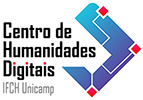This research integrates the FAPESP post-doctoral project of Pedro Telles da Silveira alongside CHD/Unicamp, which is based on crossing digital technologies, the field of visuality, and what François Hartog refers to as “evidence of history”. If history has always been associated with vision, what happens now that not only humans but also machines can see?
This starting point unfolds the analysis of three different fields: the forensic turn, the disputes of memory, and the application of modeling and 3D printing technologies for heritage-related matters. Both fields underpin the scope of evidence in the cross-section between history, technology, and politics. Therefore, the term “evidence”, which makes up the title of the research, is given a broader meaning.
This project is oriented to the preparation of a monographic book approaching these three topics and proposing an innovative reflection about the evidence of history.
![]()
![]()
![]()
Above are three examples of the production of historical evidence through the application of digital technologies. At the top, the still of the video that launched the Grenfell Media Archive, an initiative of the English group Forensic Architecture that asks for public contribution to create a 3D video of the Grenfell Tower fire in July 2017. In the middle, a 3D reconstruction of the statue of Ebu, which is part of the work Material Speculation - ISIS (2015-2016), by the Iranian-American artist Morehshin Allahyari. At last, the 3D reconstruction of Luzia’s skull, the most ancient bone ever found in Brazil, which was lost in the fire in the National Museum of Rio de Janeiro, in September 2018. This work is a result of the partnership between NEXT Laboratory, from PUC-Rio, which is coordinated by Prof. Jorge Lopes, and LAPID [Laboratory for the Processing of Digital Images], headquartered in the National Museum itself.

